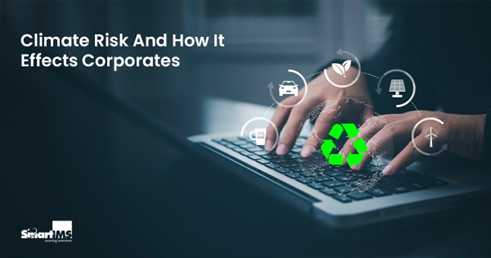Climate change is a reality, and it has become increasingly important for corporates to understand and prepare for the potential risks associated with it. Companies of all sizes are now facing the serious challenge of climate risk. With extreme weather events, rising sea levels and an increased frequency of natural disasters, it’s important to understand how these changes can affect businesses in the short-term and long term. In this article, we’ll explore how climate risk affects corporations, what steps should be taken to protect against it and what opportunities may arise from taking proactive action.
Global Market Implications Of Climate Risk
The effects of climate change are becoming more evident, and companies are under increasing pressure to address their greenhouse gas emissions and exposure to climate risk. The financial implications of climate change are far-reaching, and companies must consider the direct costs of emissions reduction measures and the potential impacts of climate-related physical risks.
From a purely financial perspective, the most direct cost associated with addressing climate change is reducing emissions – investing in energy efficiency measures, switching to low-carbon energy sources, or offsetting their emissions through carbon credits or other mechanisms. While the upfront cost of these measures can be significant, they often result in long-term cost savings by lowering energy consumption. In addition, many governments offer financial incentives for companies that take steps to reduce their emissions.
Physical risks associated with climate change include extreme weather events such as hurricanes, floods, and droughts; damage to property and infrastructure; and disruptions to supply chains. These risks can majorly impact a company’s bottom line, especially if they are not adequately prepared.
To assess climate risk, corporates need to consider both the probability of an event occurring and its potential impacts.
Many organizations incorporate climate risk into their business decisions and planning processes, such as climate models, scenario planning, and vulnerability assessments. This often involves developing mitigation and adaptation strategies to reduce the likelihood or impacts of events occurring.
Greenhouse gas emissions must peak by 2025 and reduce by 43% by 2030
Sustainable business strategies for combating climate risk
While there is no one-size-fits-all solution, there are several strategies that businesses can adopt to reduce their exposure to climate risk.
One such key strategy is increasing energy efficiency and using renewable energy sources. This can help reduce emissions, lower operating costs, and improve resilience in extreme weather events.
The second is to focus on water management, particularly in regions where water scarcity is becoming an issue. This includes implementing efficient irrigation systems, recycling wastewater, and reducing consumption.
Supply chain management is also crucial for mitigating climate risk. Businesses need to be aware of the potential impacts of climate change on their supply chains and implement plans to deal with disruptions. This could involve diversifying suppliers, building up stockpiles of key materials, or investing in alternative transportation options.
Ultimately, the best way for businesses to combat climate risk is to take a holistic approach that considers all aspects of their operations.
A corporate example of successful adaptation to climate risk
British retailer Marks & Spencer, the company has long been a leader in sustainable and ethical practices and has now gone even further by becoming the first major retailer to commit to 100% renewable energy. This will help the company avoid any future climate change disruption while reducing its carbon footprint.
As the risks from climate change continue to increase, we will likely see even more businesses taking similar steps to protect themselves and their customers from the impacts of this global problem.
In the face of these challenges, corporate leaders must implement measures like building resilience and reducing exposure. Climate change adaptation is now urgent, and climate science says that the risk of future global warming can only be stopped with the pace and scale of adaptation increased.





